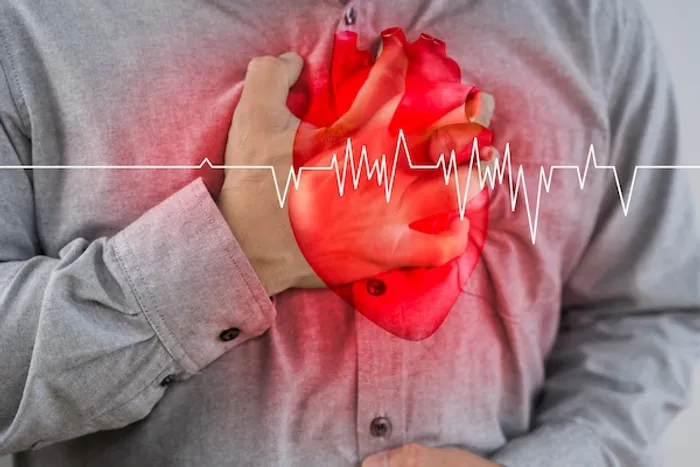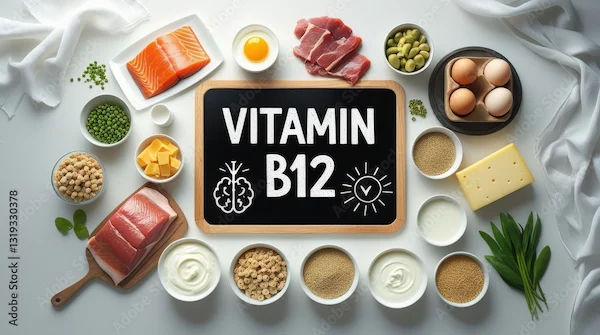Guide to Which Asanas To Avoid If Suffering From Heart Disease
Learn which yoga asanas (poses) to avoid if you have heart disease. Essential safety guide for a heart-healthy yoga practice. Protect your heart while practicing.


Introduction
If you’re living with heart disease, yoga can be a wonderful way to reduce stress, move gently, and reconnect with your body—but not all poses are created equal. Certain asanas place extra pressure on the heart and blood vessels, or shift blood flow and heart rate in ways that aren’t ideal for people with coronary artery disease, heart failure, atrial fibrillation, valve disease, or high blood pressure. The good news: with a few smart adjustments, you can capture most of yoga’s benefits while avoiding the risky parts.
This guide translates medical and yoga safety advice into plain language. You’ll learn which asanas to avoid with heart disease, why they’re risky, and how to modify your practice safely. We’ll also walk through a heart-friendly sequence you can try at home, plus special guidance for life after a heart attack, stent, or bypass. Throughout, you’ll find practical checklists, symptom red flags, and tips to talk with instructors so your practice supports your recovery, not stress it. If symptoms crop up or you’re unsure how to begin, you’ll also see when to check in with your care team. Let’s build a yoga practice that’s kind to your heart.
Understanding Heart Disease and Yoga Safety
How does heart disease change your exercise “guardrails”?
Heart disease can affect how your heart pumps (heart failure), how blood flows through narrowed arteries (coronary artery disease), how your valves open and close, or how your heart keeps rhythm (arrhythmias like atrial fibrillation). These changes affect your “guardrails” for safe exertion—how quickly your heart rate should rise, how much your blood pressure should fluctuate, and how your body tolerates positional changes like going upside down. Medications (beta-blockers, calcium channel blockers, antiarrhythmics, blood thinners) also influence heart rate, blood pressure, and bleeding risk, which shape which yoga poses to avoid heart disease.
What yoga can do for heart health (benefits and limits)?
Evidence shows yoga can reduce stress, improve sleep and mood, and modestly lower blood pressure and resting heart rate—benefits linked to better cardiovascular outcomes. A large Indian trial of yoga-based cardiac rehabilitation found it was safe and improved quality of life and return to work after a heart attack when integrated with standard care. That said, yoga is not a replacement for prescribed medications, aerobic training, or cardiac rehab. Think of yoga as a complementary tool to improve day-to-day well-being, breathing patterns, and adherence to healthy habits.
Clearance before starting: who needs it and why?
Get medical clearance if you’ve had a recent heart attack or procedure (stent, bypass), have moderate-to-severe valve disease or heart failure, uncontrolled high blood pressure, frequent chest discomfort, or symptomatic arrhythmias. Ask your clinician for activity guidelines, target exertion levels, and specific restrictions (e.g., avoid breath holding). If you’re starting out or have lingering symptoms, begin with supervised cardiac rehab or gentle classes led by instructors experienced with cardiac conditions.
Consult a Top General Physician
General Safety Rules and Red Flags for Practice
Intensity controls: talk test, RPE, and heart-rate realities on beta-blockers
- Use the talk test: you should be able to speak in full sentences while moving. If you can only get out a few words, you’re overdoing it.
- Rate of Perceived Exertion (RPE): aim for light to moderate effort (3–5 out of 10). This is more reliable than heart-rate targets if you’re on beta-blockers, which blunt heart rate responses.
- Favor a “slow flow”: longer, gentler transitions reduce sudden blood pressure swings and arrhythmia triggers.
Hydration, temperature, and class environment
- Avoid hot yoga and heated rooms. Heat, dehydration, and vasodilation can cause heart rate and blood pressure swings and may provoke symptoms.
- Hydrate before and after class; bring water to sip during practice.
- Choose small, quiet classes with time for rest and instructor attention. Place your mat near a wall for balance support and easy exits if you feel unwell.
Stop signs: when to end a session and call for help
Stop immediately if you experience chest pressure, burning or pain; unusual shortness of breath; palpitations; dizziness or faintness; leg swelling that rapidly worsens; or new neurologic symptoms. If symptoms are severe or persist beyond 5–10 minutes at rest, seek urgent care. For recurring mild symptoms or uncertainties, consult your doctor. If symptoms persist beyond two weeks, consult a doctor online with Apollo 24|7 for further evaluation.
Asanas and Practices to Avoid with Heart Disease
As you tailor your practice, it’s helpful to think in categories of risk rather than memorizing every pose. Below are the main groups of yoga poses to avoid heart disease, and why.
Inversions: headstand (Sirsasana), shoulderstand (Sarvangasana), plow (Halasana)
- Risk: Dramatic shifts in blood flow to the head, spikes in blood pressure, and neck strain; increased vagal or sympathetic swings may aggravate arrhythmias.
- Safer alternative: Legs up the wall (Viparita Karani) with hips on the floor or a thin folded blanket, not a bolster, and exit slowly.
Deep backbends: full wheel (Urdhva Dhanurasana), camel (Ustrasana) in extremes
- Risk: Increase chest wall tension and sympathetic activation; can provoke breath holding (Valsalva) and significant blood pressure rises; can strain sternal wounds post-CABG.
- Safer alternative: Supported bridge with a block (Setu Bandha Sarvangasana), gentle sphinx, or low cobra, focusing on smooth breathing.
- Long isometric strain and arm balances: chaturanga holds, crow (Bakasana), forearm stand
- Risk: Sustained isometric contraction and Valsalva raise blood pressure sharply—particularly concerning hypertension, coronary disease, and valve disease.
- Safer alternative: Knees-down plank for short intervals with breath flow; wall-supported weight-bearing for brief holds; avoid maximal effort.
Deep compressive twists and binds
Risk: Tight binds can compress the chest and diaphragm, alter venous return, and tempt breath-holding. Extreme twists also raise intra-abdominal pressure.
Safer alternative: Open, gentle twists with props, keeping chest broad and breath easy; avoid binds.
Hot yoga and heated environments
- Risk: Heat and humidity speed dehydration, lower blood volume, and can cause heart rate surges and blood pressure swings—unsafe for many with heart disease.
- Safer alternative: Room-temperature classes with slow pacing and generous rest.
Forceful breathwork: kapalabhati, bhastrika, breath retention (kumbhaka), strong bandhas
- Risk: Rapid or forceful breathing and breath retention can provoke arrhythmias, blood pressure spikes, and lightheadedness.
- Safer alternative: Diaphragmatic breathing, coherent breathing (5–6 breaths per minute), and gentle alternate-nostril breathing without holds.
Why These Poses Can Be Risky for the Heart (The Physiology)?
Valsalva and blood pressure spikes
Many challenging poses or transitions tempt a Valsalva maneuver—holding your breath while straining. This temporarily increases intrathoracic pressure, impedes venous return, and triggers an overshoot in blood pressure when you release. In hypertension, coronary disease, or valve disease, these spikes can be problematic and may precipitate chest discomfort or dizziness. Avoiding breath-holding is one of the simplest and most protective strategies.
Autonomic swings, arrhythmia triggers, and dehydration
Inversions, intense backbends, and hot environments can prompt abrupt shifts in the autonomic nervous system (sympathetic and parasympathetic) that may trigger palpitations or arrhythmias in susceptible people. Dehydration thickens the blood and can worsen orthostatic symptoms (lightheadedness on standing), increasing fall risk and strain on the heart—reasons most clinicians discourage hot yoga for those with heart disease.
Chest wall mechanics and coronary demand/supply balance
Deep compressive twists and extreme chest-opening shapes alter breathing mechanics and intrathoracic pressures. For someone with narrowed coronary arteries, the supply-demand balance of oxygen to the heart muscle can be more fragile during exertion. Keeping movements submaximal, rhythmic, and well-coordinated with breath helps maintain a safer coronary balance.
Safer Alternatives, Modifications, and Breathwork
Restorative and chair-based substitutions
- Replace headstand/shoulderstand with: Legs up the wall (hips on floor), supported reclined bound angle (Supta Baddha Konasana) with blocks/bolsters, or simply savasana with a folded blanket under knees.
- Replace deep backbends with: Bridge on a block (light lift), sphinx, or supported fish using a bolster under the mid-back for a mild opening.
- Replace arm balances/long isometrics with: Tabletop bird-dog, wall push-ups, or short holds of knees-down plank coordinated with steady breathing.
- Consider chair yoga: Seated sun salutations, gentle seated twists, ankle/knee/hip mobilizations, and sit-to-stand patterns maintain mobility with minimal hemodynamic stress. This is especially helpful as gentle yoga for seniors with heart problems.
Heart-friendly pranayama: diaphragmatic breathing, coherent breathing, gentle anulom vilom (no holds)
- Diaphragmatic breathing: One hand on chest, one on belly; inhale slowly through the nose so the belly rises; exhale slowly. Aim for 5–10 minutes.
- Coherent breathing: 5–6 breaths per minute (about 5 seconds in, 5 seconds out) can improve heart rate variability and reduce anxiety, which supports blood pressure control.
- Gentle alternate-nostril breathing: Without breath retention; keep the breath quiet and even. If you feel lightheaded, stop and return to normal breathing.
A “rest-to-stress” ratio that protects your heart
Use a 1:1 or 2:1 rest-to-effort ratio. For example, after a minute of gentle movement, rest or breathe quietly for a minute or two. These micro-recoveries reduce blood pressure surges and allow you to scan for symptoms early.
A Heart-Safe Sample Routine You Can Try at Home
20–30 minute sequence with props and gentle pacing
- Arrival (2–3 min): Seated or reclined check-in. Diaphragmatic breathing, 10 cycles.
- Warm-up (5–7 min): Neck rolls; shoulder shrugs; cat-cow with slow breath; seated or standing side stretches; ankle circles. Keep RPE at 3–4/10.
- Gentle standing flow (5–7 min): Wall-supported mountain; supported chair pose (hips back, hands on thighs, 3–4 breaths); wall-assisted lunge (short stance) with arms on hips; gentle standing twist with open chest. Repeat each side once.
- Balance with safety (2–3 min): Heel-to-toe walk along a wall; single-leg stance with one hand on the wall, 2–3 breaths each side.
- Floor series (5–7 min): Supine hamstring stretch with strap; supported bridge (block at lowest height, 3–5 breaths); figure-4 hip stretch; open supine twist with pillows under knees to avoid compression.
- Breath and relaxation (5–7 min): Coherent breathing (5 seconds in/out) for 3–4 minutes; short body scan in savasana with calves supported by a bolster.
Tips: Move on the exhale when coming out of mild backbends or twists to avoid breath holding.
Keep transitions slow, especially when changing head position (lying to sitting to standing).
End seated; check how you feel at rest before standing.
Cooldown and relaxation: yoga nidra and mindful body scan
Finish with a brief guided body scan or yoga nidra (even 5 minutes) to amplify the stress-reduction benefits that support heart health [2]. If you notice lingering palpitations or dizziness after practice, hydrate, rest, and discuss with your clinician.
Special Situations and When to Seek Medical Care?
After a heart attack, stent, or bypass (CABG)
- First choice: Enroll in a cardiac rehab program; yoga can be layered in as gentle stretching and breathing under supervision.
- Avoid: Prone positions and deep backbends if you have a recent sternotomy (CABG) until cleared; loaded arm positions that strain the chest wall; any breath holding.
- Progress gradually: Add short, low-intensity sessions; emphasize breath-led movement.
Heart failure, valve disease, and atrial fibrillation
- Heart failure: Avoid hot environments and long isometrics; prioritize chair yoga and supine positions to reduce exertion. Watch for sudden weight gain, swelling, or breathlessness.
- Valve disease: Avoid Valsalva and heavy strain; keep BP fluctuations gentle.
- Atrial fibrillation or other arrhythmias: Skip forceful pranayama; avoid sudden inversions or rapid transitions that can trigger palpitations. Keep hydration steady.
High blood pressure and diabetes overlap
- Hypertension: Avoid headstand, shoulderstand, plow, and breath retention. Gentle, regular practice can help lower BP over time.
- Diabetes and neuropathy: Favor stable positions, avoid prolonged kneeling without padding; check feet daily. Apollo 24|7 offers convenient home collection for tests like HbA1c and lipid profiles if your clinician recommends monitoring.
When to consult a doctor and how Apollo 24|7 can help?
Talk with your clinician if you’re uncertain which asanas to avoid with heart disease or if you experience new/worsening symptoms. If your condition does not improve after trying these methods, book a physical visit to a doctor with Apollo 24|7. For non-urgent questions or medication reviews, you can also consult a doctor online with Apollo 24|7.
Conclusion
Yoga can be a powerful ally for people living with heart disease—when it’s done thoughtfully. The biggest risks come from poses and practices that spike blood pressure, swing heart rate, or encourage breath holding and dehydration. By avoiding inversions, extreme backbends, long isometric strain, hot yoga, and forceful pranayama, you’ll eliminate most of the hazards highlighted by cardiology and public health guidance. In their place, choose gentle, supported shapes, slow transitions, and restorative breathwork that calm the nervous system and protect the heart.
Think of your practice as a conversation with your body. If you can talk comfortably, breathe steadily through your nose, and recover quickly between movements, you’re likely in a safe zone. If symptoms appear—chest discomfort, shortness of breath, palpitations, lightheadedness—stop and rest; seek medical advice if they persist. For those recently recovering from a heart event or procedure, start in cardiac rehab or with instructors trained to adapt yoga for cardiac conditions. And if questions come up or you need personalized guidance, consult a doctor online with Apollo 24|7.
Consult a Top General Physician
Consult a Top General Physician

Dr. Rajib Ghose
General Physician/ Internal Medicine Specialist
25 Years • MBBS
East Midnapore
VIVEKANANDA SEBA SADAN, East Midnapore

Dr. Swagato Podder
General Practitioner
5 Years • MBBS
Kolkata
GRD POLYCLINIC, Kolkata

Dr. Arif Ahmed
General Physician/ Internal Medicine Specialist
9 Years • MBBS, MD (Genl. Med.)
Kolkata
MCR SUPER SPECIALITY POLY CLINIC & PATHOLOGY, Kolkata

Dr. Abhishek Ranjan
General Practitioner
4 Years • MBBS
Kolkata
VDC Clinic, Kolkata

Dr. Soumen Paul
General Physician/ Internal Medicine Specialist
24 Years • MBBS
Kolkata
MCR SUPER SPECIALITY POLY CLINIC & PATHOLOGY, Kolkata
(50+ Patients)
Consult a Top General Physician

Dr. Rajib Ghose
General Physician/ Internal Medicine Specialist
25 Years • MBBS
East Midnapore
VIVEKANANDA SEBA SADAN, East Midnapore

Dr. Swagato Podder
General Practitioner
5 Years • MBBS
Kolkata
GRD POLYCLINIC, Kolkata

Dr. Arif Ahmed
General Physician/ Internal Medicine Specialist
9 Years • MBBS, MD (Genl. Med.)
Kolkata
MCR SUPER SPECIALITY POLY CLINIC & PATHOLOGY, Kolkata

Dr. Abhishek Ranjan
General Practitioner
4 Years • MBBS
Kolkata
VDC Clinic, Kolkata

Dr. Soumen Paul
General Physician/ Internal Medicine Specialist
24 Years • MBBS
Kolkata
MCR SUPER SPECIALITY POLY CLINIC & PATHOLOGY, Kolkata
(50+ Patients)
More articles from Heart disease
Frequently Asked Questions
Which yoga poses should heart patients avoid?
Avoid headstand, shoulderstand, plow, deep backbends like full wheel, long isometric holds (e.g., extended chaturanga), arm balances, hot yoga, and forceful breathing techniques like kapalabhati, bhastrika, and breath retention. These can cause blood pressure spikes and arrhythmia triggers.
Is hot yoga safe for heart patients?
Generally no. Heat and humidity increase heart rate variability, dehydration risk, and blood pressure swings. People with coronary disease, heart failure, valve disease, or arrhythmias should avoid hot yoga and choose room-temperature classes.
What is the safest breathing for heart disease?
Use diaphragmatic breathing and coherent breathing (about 5–6 breaths per minute). Gentle alternate-nostril breathing without breath holds is also acceptable. Avoid breath retention (kumbhaka) and forceful pranayama.
Can I do yoga after a heart attack or a stent?
Yes, with clearance. Start in cardiac rehab or gentle classes with experienced instructors. Avoid heavy strain, inversions, and hot environments. Progress slowly and stop for any chest pain or unusual symptoms. If symptoms persist beyond two weeks, consult a doctor online with Apollo 24|7 for further evaluation.
What modifications make yoga safer if I have high blood pressure?
Skip inversions and deep compressions, keep poses dynamic and submaximal, avoid breath holding, and use props (chair, blocks, wall). A safe yoga sequence for hypertension emphasizes slow flows, supported poses, and restorative breathwork.



